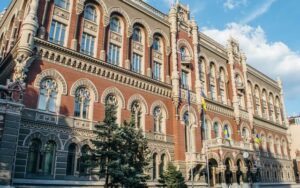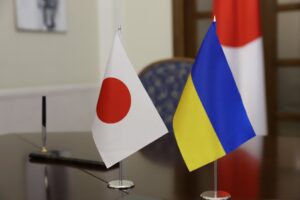
Wealthy Russians subject to U.S. sanctions may try to evade them by investing in the U.S. commercial real estate market, the U.S. Treasury’s Financial Crimes Enforcement Network (FinCEN) warned. The regulator urged U.S. banks to be vigilant, noting that the complex financing schemes and opaque partnership structures used in this market can help hide funds, writes The Wall Street Journal. FinCEN is the recipient of suspicious activity reports that financial institutions are required to file when they detect signals that a transaction is potentially illegal. The warning for banks issued by the regulator on Wednesday is another attempt by the U.S. Treasury Department to prevent wealthy Russian citizens from circumventing financial sanctions, the WSJ notes. “Thanks to international pressure and economic restrictions imposed on Russia by more than 30 countries, there are fewer and fewer opportunities for sanctioned Russian elites to move and hide their ill-gotten gains,” said Himamouli Das, acting head of FinCEN. The regulator outlined a number of signs and “red flags” that should alert banks. For example, sanctioned Russians may try to use investment pools or offshore funds to avoid inspections, he warned. Banks are usually not required to identify people who own less than 25% of shares in the funds. Thus, sanctioned individuals can reduce their stakes to avoid scrutiny while still retaining control of the fund, FinCEN says. They may use front companies and multi-level schemes involving multiple legal entities or trusts, as well as transfer assets to other family members or business partners to hide their involvement, the regulator warns. It notes that sanctioned individuals may not only invest in high-end and luxury real estate. In some cases, they may look for more discreet investments that provide a stable income without attracting unwanted attention. Using such strategies to evade sanctions is just as likely in small and mid-sized U.S. cities as it is in metropolitan areas, FinCEN notes. Last year, the regulator issued a similar warning to banks, advising them to pay close attention to transactions involving art, luxury yachts and jewelry.

The decline in Ukraine’s real gross domestic product (GDP) in the first quarter of 2023 compared to the same period last year will slow to 19% from 35% and 30.8% respectively in the fourth and third quarters of 2022, the National Bank of Ukraine has published this forecast in an inflation report on its website.
According to him, in the second quarter of 2023 the economy will begin to recover and immediately 11.7%, given the low base of the second quarter of last year, when the decline was 37.2%.
In the third and fourth quarters of this year, the National Bank expects growth to slow to 1.5% and 8.2%, respectively, and real GDP will grow by 0.3% this year after a 30.3% decline last year.
The NBU’s updated estimates of the GDP dynamics are worse than last October, when it expected the economy to decline by 17.5% in the first quarter of this year and to grow by 13.9% in the second quarter, and by 4% for the year as a whole.
For next year, the National Bank has worsened its growth forecast from 5.2% to 4.1%, and expects growth to accelerate to 6.4% in 2025.
“The baseline scenario is based on the assumptions of launching a new cooperation program with the IMF, conducting a coordinated monetary and fiscal policy, the gradual leveling of quasi-fiscal imbalances, in particular in the energy sector. Also, the baseline scenario assumes a tangible reduction of security risks from the beginning of 2024, which will contribute to the full unblocking of seaports, reduction of the sovereign risk premium and the return of forced migrants to Ukraine,” the report notes.
It also provides for the absence of new critical damage from shelling, as well as the successful work of the government to attract international aid for the energy sector and the intensive restoration or replacement of damaged infrastructure.
The NBU specifies that the baseline scenario assumes a reduction in net outflows from Ukraine this year to 0.8 million from 8 million last year and a gradual return of 1.5-1.4 million in 2024-2025.
The central bank adds that this forecast also assumes continued active international financial support for Ukraine of $38.6 billion in 2023, $20 billion in 2024 and $8 billion in 2025, up from $32.5 billion last year.
The strongest risk for this scenario, the National Bank calls the prolongation of the war and its escalation, estimating its probability from 25% to 50%.
With 15-25% probability the National Bank considers such risks as increased emigration and growing energy shortages due to damaged infrastructure and unbalanced state finances (freezing of utility rates, cuts in international aid, emission deficit financing).
The NBU also names among the moderate risks of the baseline scenario a delay in the program with the IMF and the termination of the “grain corridor”, but their probability is lower – less than 15%.
The report also mentions such factor as “Marshall Plan”, which can strongly influence and improve macro-forecast, but its probability is estimated by the central bank below 15%.

The Japanese government will allocate another $170 million in 2023 for emergency reconstruction projects, particularly critical infrastructure, in addition to the $95 million already allocated earlier this year, according to the Ministry of Reconstruction’s website.
“The unconditional priority at this stage of reconstruction is the restoration of critical infrastructure necessary to meet the basic needs of citizens. This is a necessary step to return Ukrainians to their homes and maintain economic development in the regions,” the release quotes Deputy Prime Minister and Head of the Ministry of Reconstruction Oleksandr Kubrakov as saying.
It is noted that the assistance provides Japanese partners with goods and services necessary for the reconstruction. Ukraine will receive these funds under a grant agreement with the Japan International Cooperation Agency (JICA),
Kubrakov thanked partners for the support, noting that it is extremely valuable and necessary. Deputy Prime Minister expressed hope that after the war it would be possible to quickly move on to long-term investment projects.
As reported, in early January, the Japanese government allocated $95 million for reconstruction. These funds are directed to the UN Development Program (UNDP) in the framework of a partnership agreement.

Raiffeisen Bank (Kyiv)’s profit in 2022 amounted to UAH 1.5 billion, which is 3 times less than in 2021 (UAH 4.6 billion), the bank’s press service said on Wednesday.
According to the press release, the bank’s operating profit almost doubled to UAH 11.4 billion.
In addition, the bank increased allocations to reserves to cover war-related risks by UAH 9.5 billion.
According to the bank, the share of non-performing assets in its loan portfolio increased to 14%, and the lost income from commission and interest operations, in particular from the abolition of fees and the introduction of “credit customers”, is estimated at UAH 400 million.
It is noted that the financial institution’s liabilities portfolio grew by 35% over the year at the expense of individuals and legal entities, which allowed the bank to increase its share in the liabilities market by 0.8 percentage points to 7.8%.
It is also noted that the bank’s total loan portfolio increased by 1% to UAH 71.39 billion.
At the same time, according to the press service, Raiffeisen Bank focused on lending to critical sectors of the economy, namely the agricultural sector, logistics and retail, pharmaceuticals and fuel supply.
In 2022, the bank issued UAH 10 billion of new loans using its own funds and participation in government programs, declared and transferred UAH 1.9 billion of taxes and fees.
In addition, in 2022, the financial institution increased the volume of cash foreign currency imports into the country by 4 times and helped to return to Ukraine more than UAH 1.2 billion of cash exchanged by Ukrainians abroad for local currencies.
“In 2022, Raif bought $2.5 billion more from its customers than it sold, which is four times more than in 2021. The bank sold most of this currency on the interbank market, thereby reducing the need for the NBU to sell currency from Ukraine’s foreign exchange reserves,” the statement said.
According to the report, in 2022, Raiffeisen Bank invested UAH 370 million in uninterrupted operation, providing 42% of its network, or 120 branches, with generators. The financial institution also increased staff support by UAH 271 million, retaining the salaries of 150 mobilized employees, and allocated UAH 220 million of its own funds for humanitarian aid to war victims.

Zaporizhkoks PJSC, one of Ukraine’s largest producers of coke products, a part of Metinvest group, increased blast furnace coke production by 6.1% in January this year compared to the same period last year – up to 72.9 thousand tons.
According to the company, 70.8 thousand tons of coke was produced in December, compared to 68.1 thousand tons in November and 68.7 thousand tons in January 2022.
As it was reported, in 2022 Zaporizhkoks reduced the production of blast-furnace coke by 11.9% compared to 2021 – up to 737.4 thousand tons, including 70.8 coke produced in December.
“Zaporizhkoks” produces about 10% of coke produced in Ukraine, owns a full technological cycle of processing of coke products. It also produces coke gas and pitch coke.
“Metinvest is a vertically integrated mining group of companies. Its major shareholders are SCM Group (71.24%) and Smart Holding (23.76%) that jointly manage the company.
Metinvest Holding LLC is the managing company of Metinvest group.

Zaporizhstal steelmaker Zaporizhstal in January this year decreased steel shipments by 74% y-o-y, to 73 thsd. tons.
According to the company, steel output fell by 72.7% to 89.9 thousand tons during this period, and iron output decreased by 58.5% to 166.4 thousand tons.
In December-2022, the steel plant produced 142.1 thousand tons of pig iron, 70.8 thousand tons of steel, shipped 56.7 thousand tons of rolled steel.
“The decrease in production levels compared to the same period last year is due to the shortage of raw materials and logistical problems caused by full-scale military action in Ukraine. In addition, due to missile attacks on the energy infrastructure, there was a shortage of capacity in the national energy system, as a result of which the plant reduced production, thus reducing the consumption of purchased electricity,” the press release explains.
As it was reported, in 2022 “Zaporizhstal” decreased the production of rolled steel by 60.4% compared to 2021 – up to 1 million 304.3 thousand tons, steel – by 61.7% to 1 million 491.3 thousand tons, iron – by 54.3%, to 2 million 9.9 thousand tons.
“Zaporizhstal” is one of the biggest industrial enterprises in Ukraine, which products are in great demand among the consumers on the internal market and in many countries of the world. The plant specializes in high-quality carbon and low-alloy steel coils, hot-rolled plates, cold-rolled sheets, cold-rolled coils, as well as steel straps, tin plates, formed sections.
Main consumers are producers of welded pipes, enterprises of automotive, transport, agricultural engineering, producers of household appliances.
“Zaporizhstal is in the process of integration into Metinvest Group the main shareholders of which are CJSC “System Capital Management” (71.24%) and Smart Holding group of companies (23.76%).
Metinvest Holding LLC is the management company of Metinvest group.